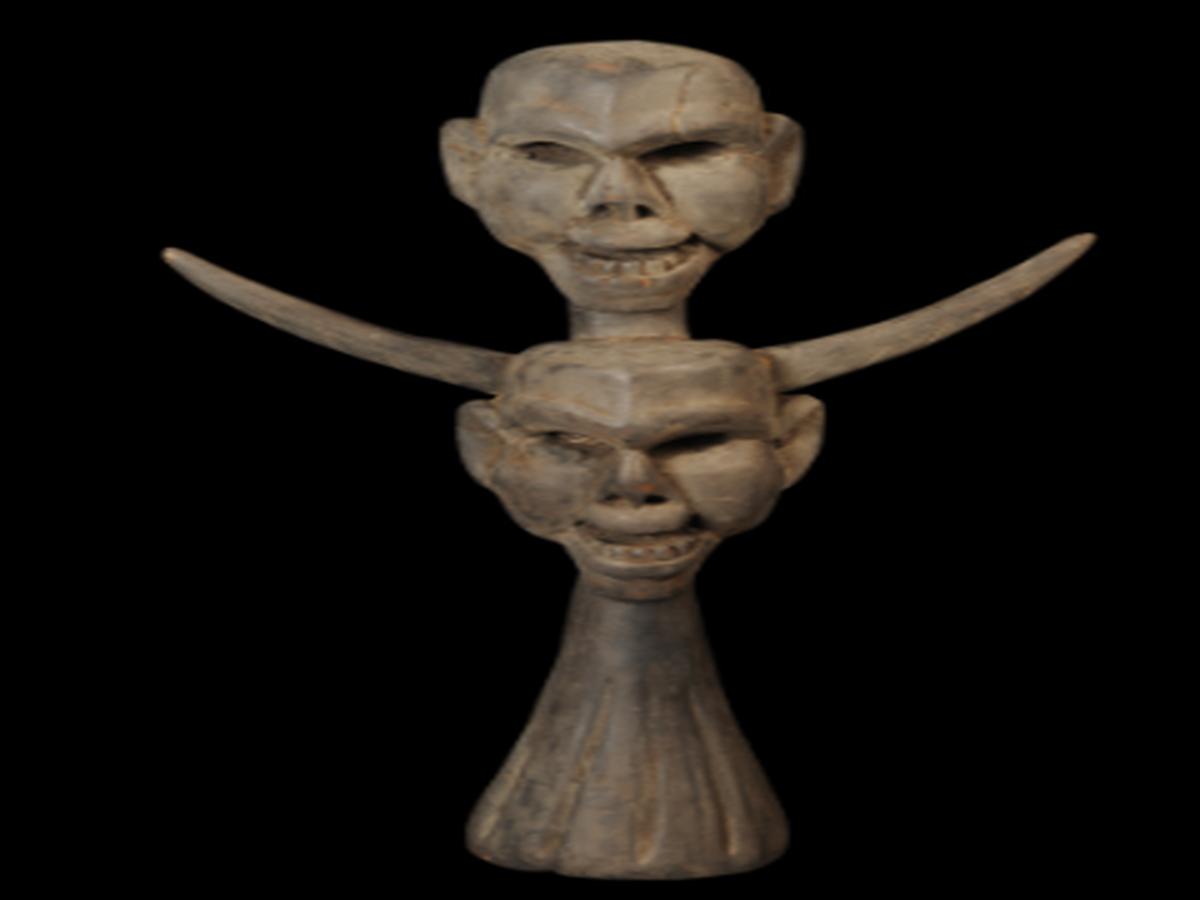State
Tribe Name
Art Type
short description
The Wooden Effigy with double human heads is a unique and particular in its symbol, belonging to the Konyak Naga tribe, which claims the Mon district in Nagaland, India, as its own. With a rich tradition in arts and the warrior spirit, the Konyaks express their art through wood and metal sculptures that are significantly ceremonial and cultural. The effigy is made of two human heads carved in wood and placed end to end on top of one another. In between the human heads is placed the lunar shaped wooden horn that signifies the celestial or spiritual symbolism
Thumbnail

Filter Postion
Left
Filter Background
Off
Theme
Filter Header Image

content
Image

description
The Wooden Effigy with double human heads is a unique and particular in its symbol, belonging to the Konyak Naga tribe, which claims the Mon district in Nagaland, India, as its own. With a rich tradition in arts and the warrior spirit, the Konyaks express their art through wood and metal sculptures that are significantly ceremonial and cultural. The effigy is made of two human heads carved in wood and placed end to end on top of one another. In between the human heads is placed the lunar shaped wooden horn that signifies the celestial or spiritual symbolism.
The entire structure is mounted on an elongated wooden pedestal with a circular base so that it can be placed upright to attract a focus within ritual or symbolic conditions. Again, human heads as a strong icon in Konyak culture are significantly engaged with the headhunting past of the tribe. It was no war act; it was almost a sacred ritual, through which fertility, prosperity, and ancestral honor would come to pass. Many effigies signifying human heads act like memorials, or guardians for, say, morungs (bachelor's dormitories), family altars, or ceremonial grounds. Indeed, the moon-shaped horn between the heads is what is expected to have a spiritual significance, one denoting cosmic cycles, and ancestor guidance, or duality of human existences: life and death, the seen and unseen. These layered symbols embedded in the sculpture reflect the complexity of the tribe's worldview, in which life, death, and the cosmos are intertwined. Such artifacts are preserved in ethnographic collections, like the Indian Museum, Kolkata, where they help build up valuable evidence about the Konyak Naga tribe's cultural and spiritual heritage
The entire structure is mounted on an elongated wooden pedestal with a circular base so that it can be placed upright to attract a focus within ritual or symbolic conditions. Again, human heads as a strong icon in Konyak culture are significantly engaged with the headhunting past of the tribe. It was no war act; it was almost a sacred ritual, through which fertility, prosperity, and ancestral honor would come to pass. Many effigies signifying human heads act like memorials, or guardians for, say, morungs (bachelor's dormitories), family altars, or ceremonial grounds. Indeed, the moon-shaped horn between the heads is what is expected to have a spiritual significance, one denoting cosmic cycles, and ancestor guidance, or duality of human existences: life and death, the seen and unseen. These layered symbols embedded in the sculpture reflect the complexity of the tribe's worldview, in which life, death, and the cosmos are intertwined. Such artifacts are preserved in ethnographic collections, like the Indian Museum, Kolkata, where they help build up valuable evidence about the Konyak Naga tribe's cultural and spiritual heritage
Image Mode
landscape
promoted
On
Verified
Off
